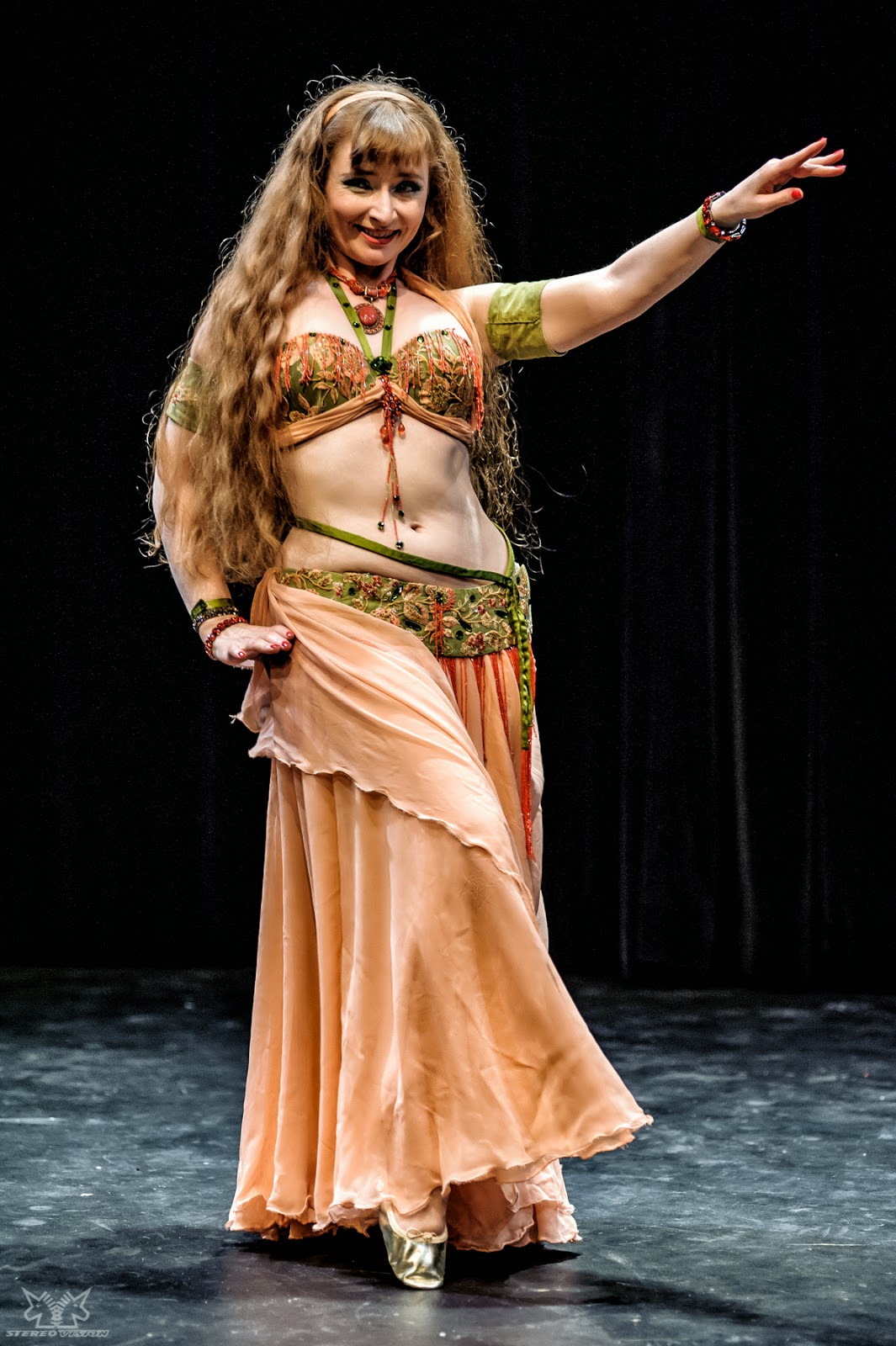I began work on Zeina in early 2014,
during a period of particular bafflement over many dancers'
enthusiasm for choreographic sequencing that deliberately sets asymmetrical movement combinations to highly structured
call-and-response traditional belly dance music. My original
thoughts took the form of
this Facebook post of February 13, 2014,
reprinted below:
Dancers: there's a trend in Modern Egyptian that I think is
bleeding out into the larger bellysphere to NOT interpret
call-and-response as repetition with variation. I'm talking about
totally nonsymmetrical composition—choreography like: 8 counts of
this (on the call phrase) then 8 counts of something else (on the
response phrase), then 8 counts of something completely new (on the
repeat of the call phrase), then 8 counts of a fourth entirely
different thing (on the repeat of the response phrase, which, yes, is
often wrapping up differently than the first response phrase, but
still references its first iteration), and then, regardless of where
the music goes next, switching to a 5th then 6th then 7th etc. whole
new thing continuing thus until the end. All the discrete
combinations individually interpret their respective chunks of music
very well, but then the combinations don't link into a map that
matches the map of the music.
I've discussed this a little with a few a dancers I know, and it's
been explained to me that current popular perception (particularly in
competitions and so-called "master classes") is that any
use of repetition is "boring" and "easy" that the
"professional" is above that kind of "beginner"
approach. I completely agree that it's boring (if not downright lazy,
sloppy, uninspired, amateurish, banal, etc) to return to identical
phrases of choreography. But I don't understand the critic who turns
up her nose at, when it's musically inspired, 8 counts of something
leading to the right, followed by six counts of the same thing except
leading to the left and then ending with two counts of some sort of
phrase-ending punctuation that transitions you into the next thing.
Does your ability to hear the music only last for 8-count increments?
If, after 16 counts, a new instrument plays 16 new counts of the
exact same melody line we just heard, you DON'T want me to draw a new
version of and/or expand on the shape and/or theme I introduced in
the previous section? I should not link my phrases into a coherent
whole, despite the fact that the music I'm dancing to DOES have a
deliberate internally coherent structure?
Is this really just me? I get that this new-thing-every-8-counts
approach is a way to cram more stuff in your dance, and that makes
for greater dynamic range and more opportunities to showcase
technique so it's more attention-grabbing and OOH SHINY. That part is
great. I just don't get why anyone actively prefers ABCDEFGH
choreography sitting on top of A1-B1-A2-B2; A1-B1-A2-B3 music.
With these ideas in my head, my work on
Zeina, in many ways, became a love letter to symmetry: a defense and
celebration of a very specific aesthetic. Working with the program,
you will see that the composition is rigorously balanced—every step
is just so, placed with great deliberateness, perfectly gridded to
the map of the music.
But is music interpretation the best,
finest, quantitatively superior approach to choreography, and is a
one-to-one movement-music correspondence the pinnacle of music
interpretation? Sometimes, maybe, but sometimes surely not, and asking dancers to confine their efforts to any single approach would not serve the
interests of the art form. Zeina's aesthetic is simply one flavor of
many, and if some other flavors are not so much to my taste, it is at
least in part because they are under development. My thoughts in
this vein, composed as a followup to the above Facebook post, are in
this blog post:
The Value of Professional Choreography.
I have not yet decided on my next
project, but having put an enormous investment in Zeina, I am ready
for a change of pace, and am likely to take on something totally
different, perhaps even a dance that takes me in a totally free form
direction, or to fluffier fare for a mainstream commercial audience.
But I think I will always love choreographing to perfectly trace the
shapes of sophisticated accompanying music; to me, this approach
creates a whole that is greater than the sum of its components.
Music and movement become more sensually affecting when they
synesthetically translate one into the other. By balancing the
Apollonian element of orderly structure against the Dionysian element
of belly dance vocabulary's winding sinuosity, the dancer intensifies
the most compelling characteristics of each. Drilling down into
melody, musically-shaped choreography reveals nuances that might
otherwise escape the appreciation of the less-engaged listener.






